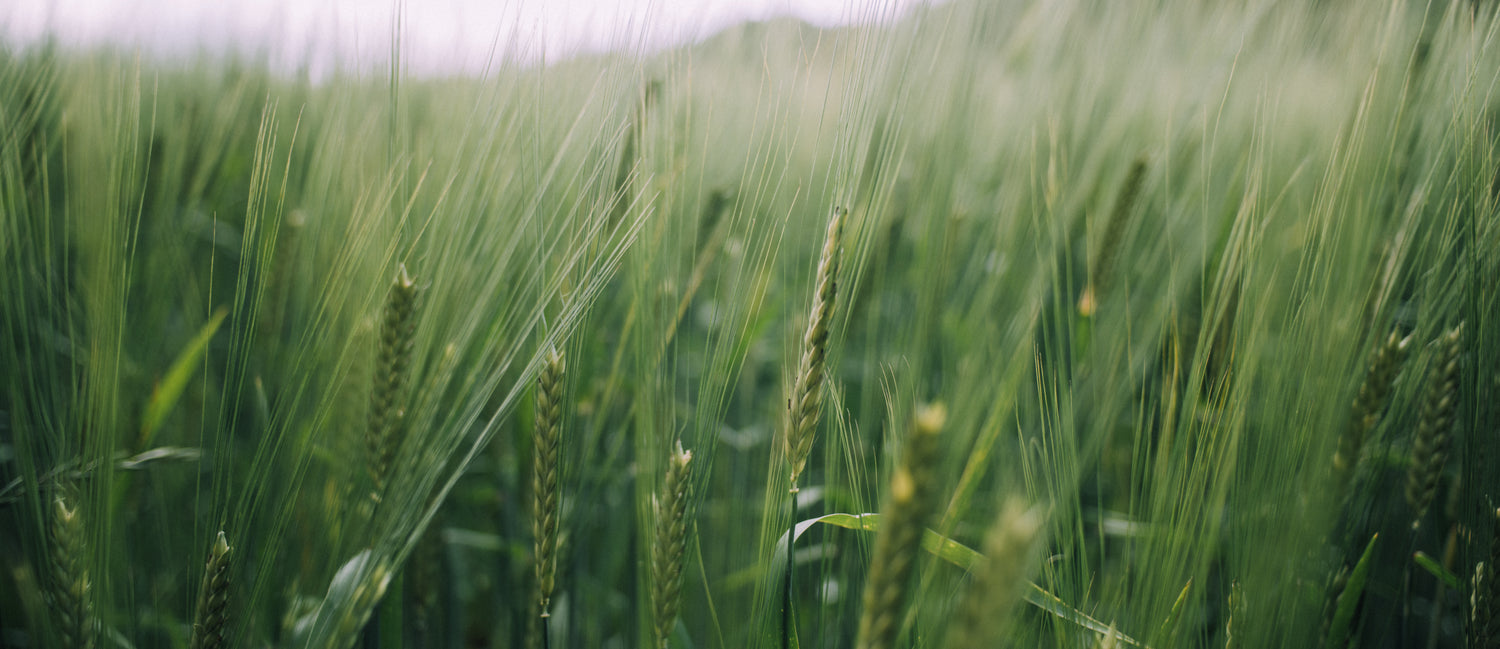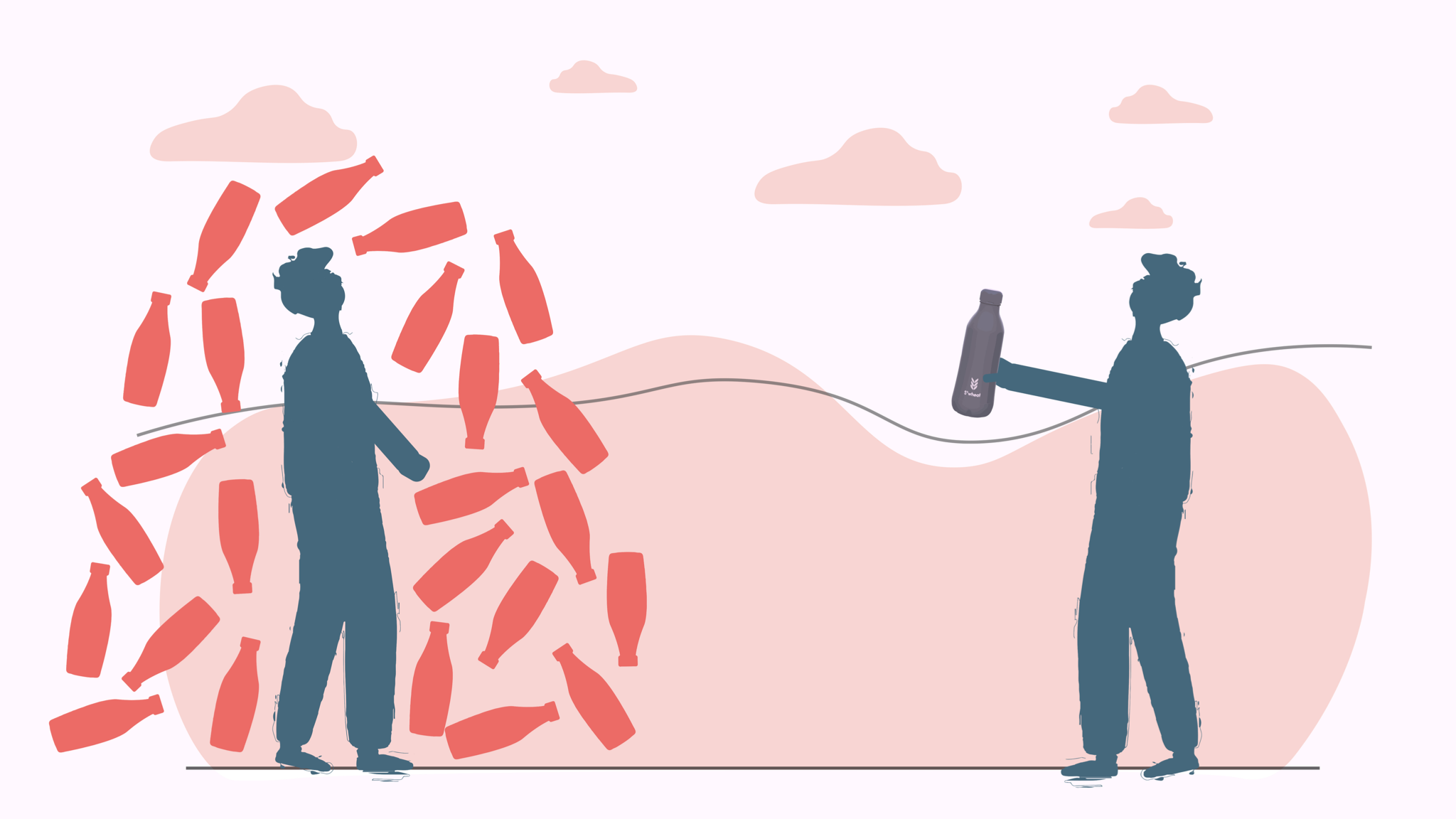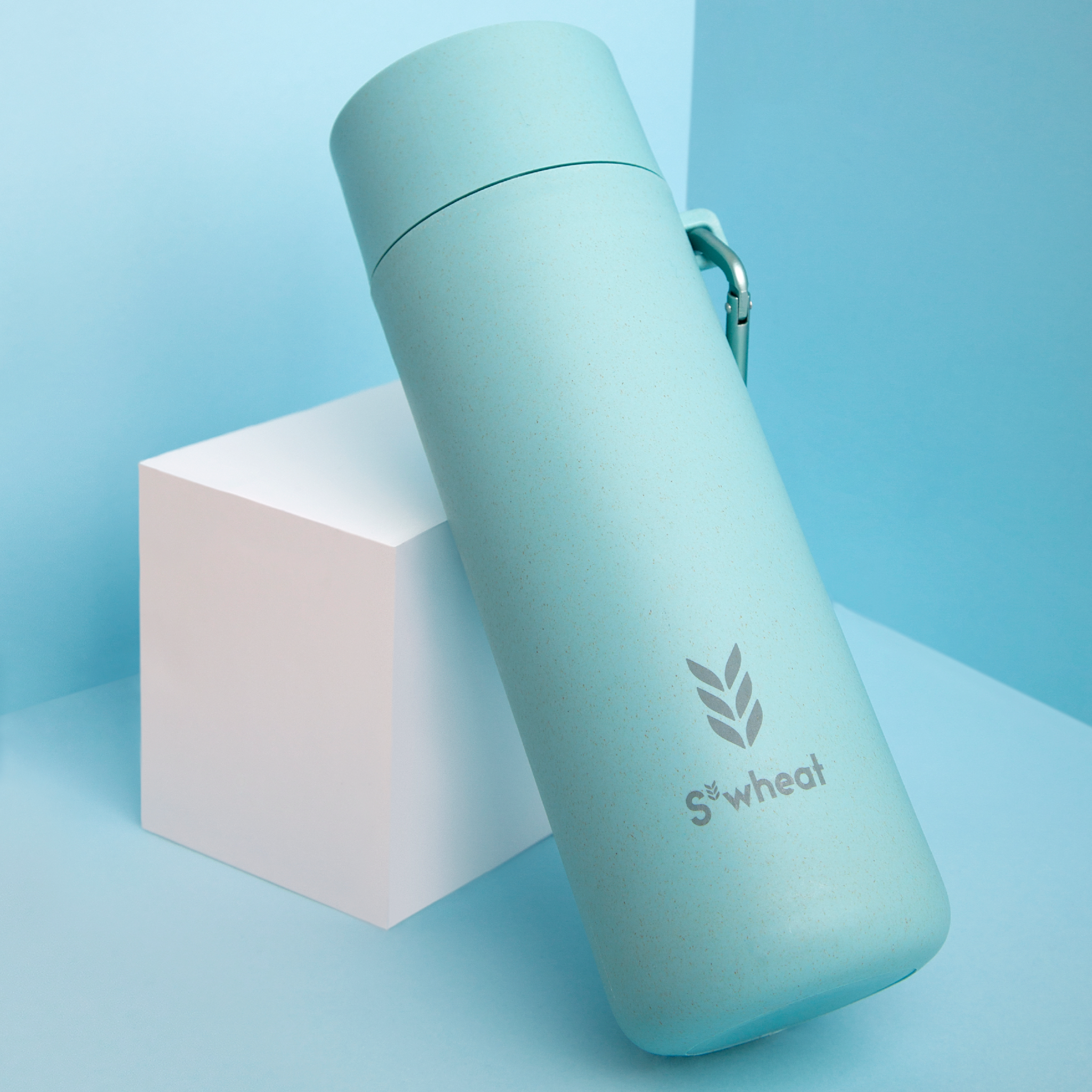Wheat straw is a new and innovative bio-plastic that can be used as an eco-friendly alternative to petroleum based plastics. Wheat straw fibre is food safe certified, BPA free and FDA approved meaning it can be used in a range of applications.
But where does wheat straw plastic come from and is it environmentally friendly?
Like traditional plastics, wheat straw is extremely lightweight and durable, making it one of several fibrous plants capable of being used as bioplastics. But unlike plastic, wheat straw is not manufactured from fossil fuels.
Wheat straw is a type of edible grain that is used all over the world to make the foods we love such as flour, bread and wheat derived products like pasta. Wheat straw is a by-product which is often burnt after the wheat grain is harvested, by taking this waste and using it for sustainable, innovative materials and products it makes it a great zero waste solution.
Here are 7 things you should know about wheat straw:
- Wheat straw is gluten free – This is one of the most commonly asked questions and the answer may be surprising. Yes wheat straw is completely gluten free, this is because the straw doesn’t contain any gluten naturally. Gluten allergy sufferers can usually use wheat straw fibre products.
- As a by-product after harvesting, wheat straw provides farmers with an additional source of income while reducing their carbon emissions.
- It can be biodegradable (dependent on manufacturer) in local industrial composting sites within 6-9 months.
- Wheat straw is a renewable alternative, it does not require chemical fertilizer to grow and does not need chemically treated when used as a sustainable material.
- Wheat straw products are naturally anti-bacterial and anti-odour, it’s a win-win!
- Like traditional plastics, wheat straw bio-plastics are extremely durable which makes them perfect for everyday products such as wheat straw reusable bottles and coffee cups.
- Not all wheat straw fibre products contain Melamine, this is dependent on the manufacturer. At S’wheat we never use melamine in any of our products.
You may be thinking, wow that’s amazing but how is wheat straw taken from a field and made into reusable products such as a wheat straw water bottle?
At the end of a farmers harvest they will sell their wheat grains to various stores and manufacturers for to be turned into food, animal feed etc. They will then be left with the waste by-products, which can be burnt or sold on to sustainable manufacturers for use in bio-plastic materials.
To go from dried straw to durable material the wheat straw is firstly cleaned and vacuumed to remove all dirt and dust. Then the individual fibres of the straw are broken up in order to gain a compound called ‘lignin’. Lignin naturally occurs in plants to help with strength and staying upright.
Lignin can then be mixed with substances such as sugar to create a plastic like compound, which is mouldable into many forms, uses and shapes. Once the shape has been formed an eco-friendly dye can be added alongside some finishing touches to create a unique reusable product that can be used daily for many years to come.
What is the environmental impact of this production and is it sustainable?
As wheat straw is a by-product it is not excessively or additionally farmed, in fact it is often burnt which releases carbon dioxide into the atmosphere, so utilising this waste provides a great zero-waste option.
It is also important to know that as photosynthesis occurs, wheat plants extract more carbon (co2) from the air than they produce, therefore creating a carbon neutral product. This is common with many plant-based bioplastics.
As we create more new and innovative uses for bioplastics like wheat straw we can prevent single use petrol based plastics from littering our landfills and oceans and drastically reduce the amount of Co2 damaging our atmosphere.
7 Fun Facts and Information About Wheat:
- Worldwide, wheat covers about 2.25 million square kilometres of the globe’s surface, almost ten times the size of the UK.
- Ten thousand years ago wheat was just a wild grass, one of many, confined to a small range in the Middle East.
- According to the basic evolutionary criteria of survival and reproduction, wheat has become one of the most successful plants in the history of the earth.
- Wheat was introduced by the first English colonists and quickly became the main cash crop of farmers who sold it to urban populations and exporters.
- The country now producing the largest amount of the crop in the world is China.
- Every continent except Antarctica grows the crop to some extent.
- In 1777, wheat was first planted as a hobby crop.
S’wheat
We wanted to create the most sustainable reusable bottle yet, which is why our plant-based bottles are made from a unique blend of bamboo fibres and wheat straw. To offset our carbon and allow us to remain carbon negative, we plant trackable native trees with every order - a minimum of 50 when you co-brand with us!
We also offer assistance in manufacturing with our plant-based material - check out our plant-based manufacturing page if you’re interested in using our wheat straw bioplastic for your own products.
To brand our bottles with your logo in our high-quality laser engraving, check out our co-branding page to enquire. We also offer custom Pantone colours so you can match it to your branding!
Have you learnt something new about wheat straw and its uses? Let us know by commenting wheat is S’wheat in the comments below!
Looking for Wheat Straw products? Check out our custom wheat straw product manufacturing options here.
Shop the S'wheat bottle here, the worlds first reusable bottle made from plants! The S'wheat bottle is made from waste bamboo and wheat straw that would otherwise be burnt.
Want to co-brand with us? Add your logo to the S'wheat bottle and find out more here.




12 comments
Koay yi Jing
May i know how frequent we shall dispose those wheat straw lunch box used for microwave purpose?
Is that safe for lifetime for using under microwave? Or we shall change every year?
Lewis
Is wheat straw dishes safe to use. Are they safe if heated? Just answer truthfully. Are there other chemicals in wheat straw? Thanks for the information on wheat origin.
Sunny
Hello Sir/Madam,
I didn’t understand this part.
Would you please explain more detail about this:
What is photosynthesis ? How does it occur?
This means wheat straw product not safe ?
It is also important to know that as photosynthesis occurs, wheat plants extract more carbon (co2) from the air than they produce, therefore creating a carbon neutral product. This is common with many plant-based bioplastics.
Thank you.
Sunny
Sunny
Hello Sir/Madam,
I didn’t understand this part.
Would you please explain more detail about this:
It is also important to know that as photosynthesis occurs, wheat plants extract more carbon (co2) from the air than they produce, therefore creating a carbon neutral product. This is common with many plant-based bioplastics.
Thank you.
Sunny
Sunny
Hello Sir/Madam,
I did t understand this part.
Would you please explain more detail about this:
It is also important to know that as photosynthesis occurs, wheat plants extract more carbon (co2) from the air than they produce, therefore creating a carbon neutral product. This is common with many plant-based bioplastics.
Thank you.
Sunny
Leave a comment
All comments are moderated before being published.
This site is protected by hCaptcha and the hCaptcha Privacy Policy and Terms of Service apply.